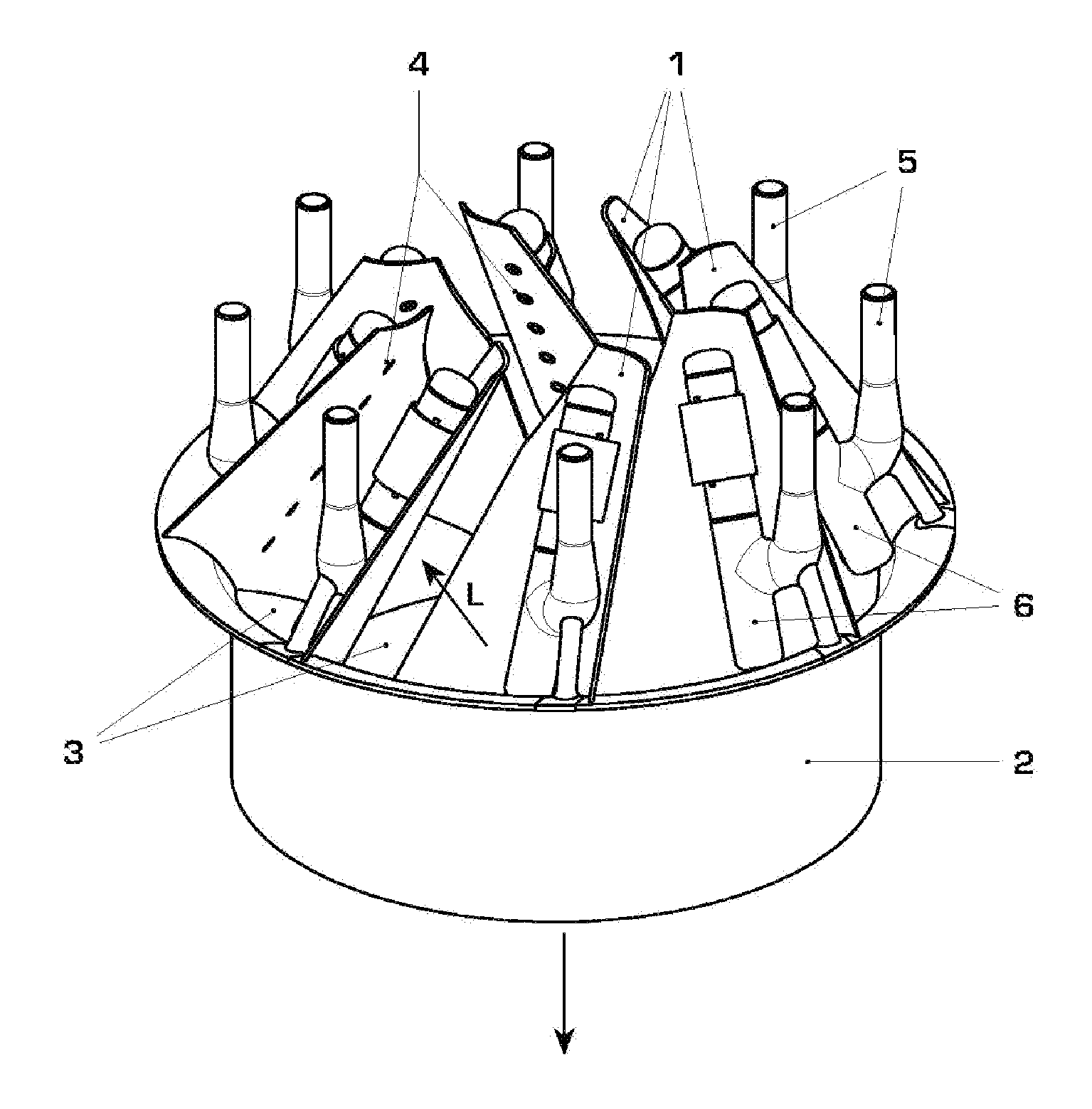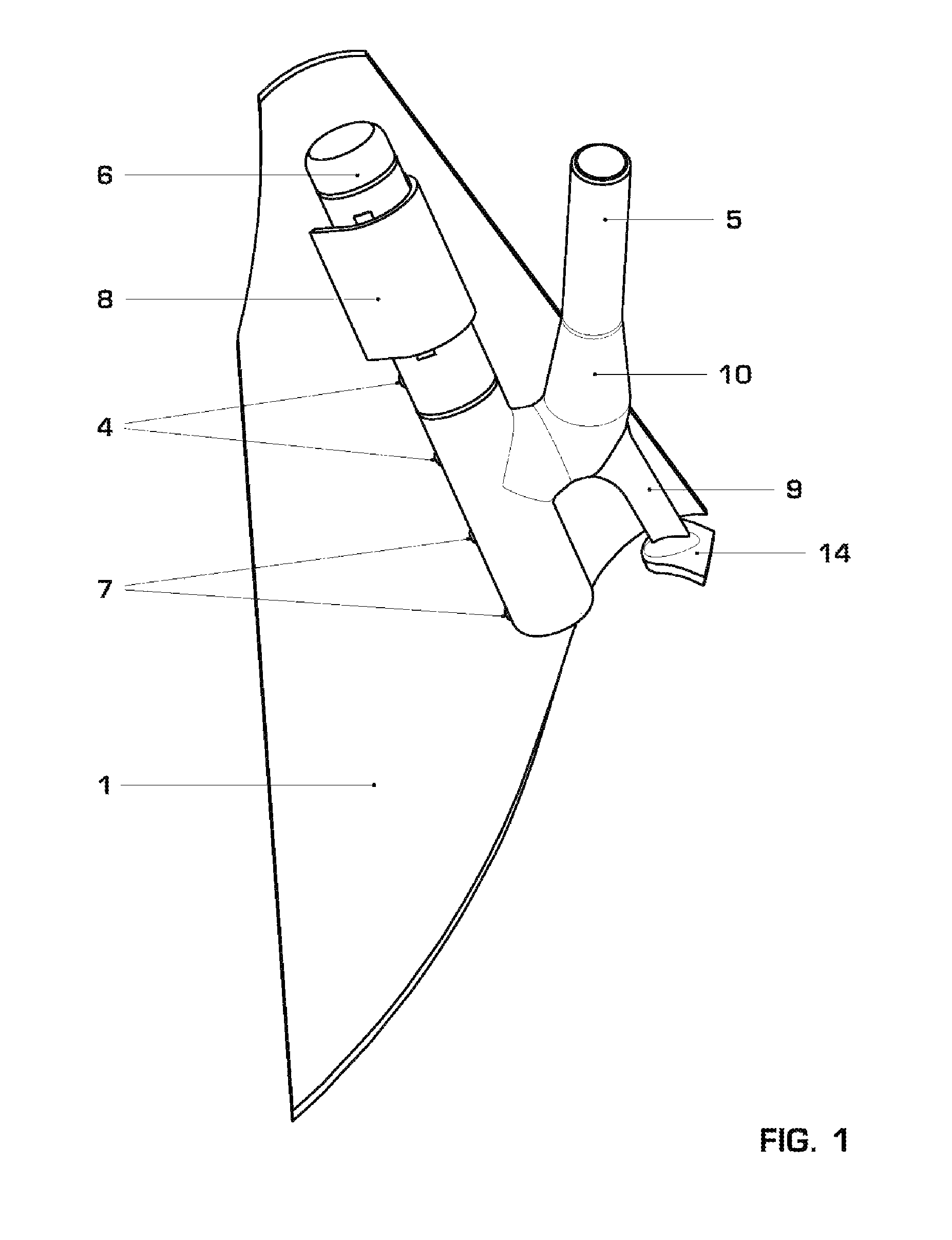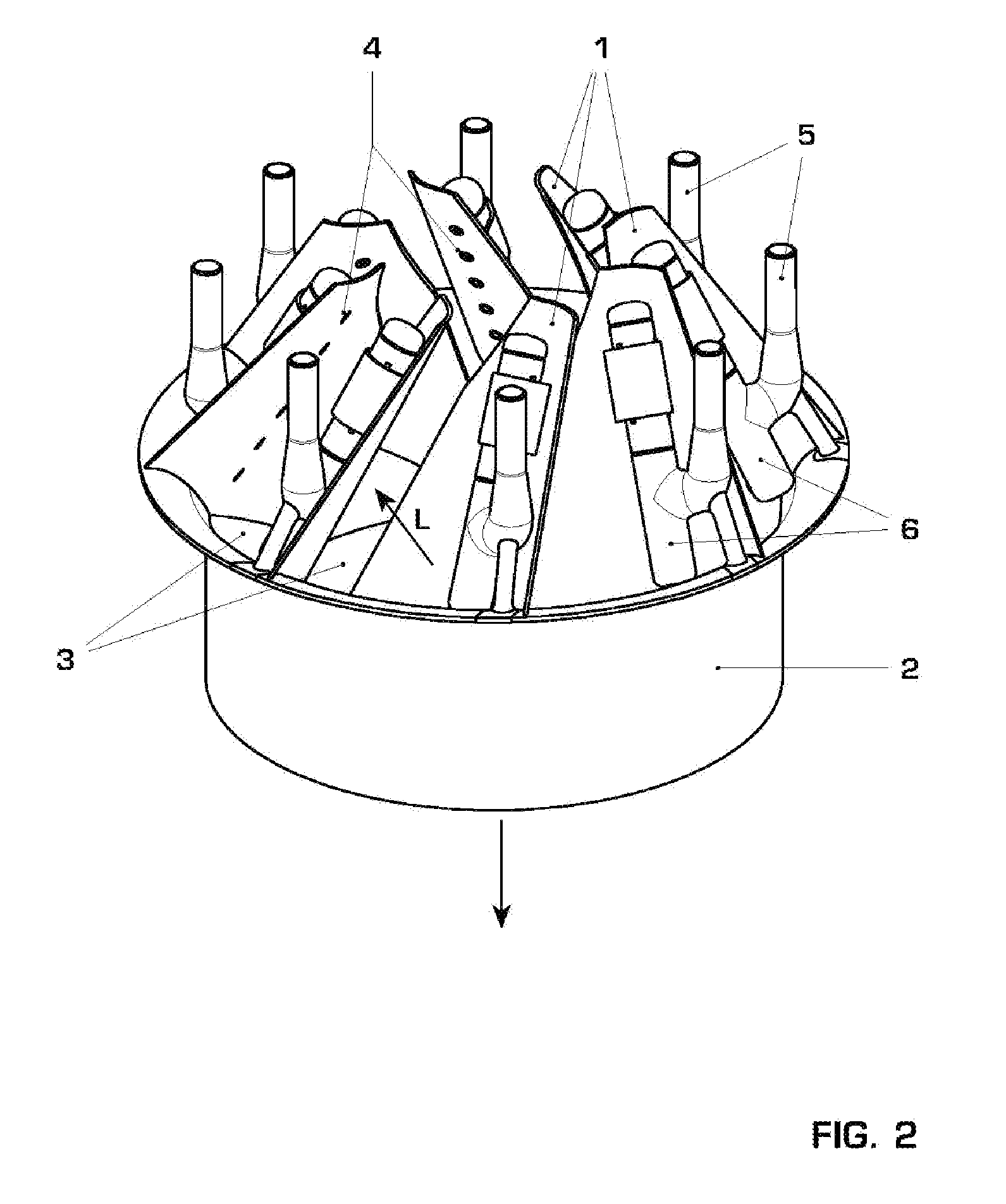Premixing burner for generating an ignitable fuel/air mixture
a technology of ignitable fuel and air mixture, which is applied in the direction of combustion types, lighting and heating apparatus, and combustion using lumps and pulverulent fuel, etc. it can solve the problems of irreversible structural weakening, cracks within the material regions surrounding the fuel orifice, and total loss of at least the affected part of the conical shell
- Summary
- Abstract
- Description
- Claims
- Application Information
AI Technical Summary
Benefits of technology
Problems solved by technology
Method used
Image
Examples
Embodiment Construction
[0025]FIG. 1 is a three-dimensional illustration of a single burner shell 1, of which the top side facing away from the swirl space faces the observer so as to be visible.
[0026]To make it easy to understand the spatial arrangement and type of functioning of the burner shell illustrated in FIG. 1, reference may made, furthermore, to the swirl generator, shown in FIG. 2, of a premixing burner which provides eight individual burner shells 1 which are arranged in the form of a crown around a molded element 2 and internally enclose with respect to one another in each case a conically widening swirl space. For the sake of greater clarity, a holding ring which is to be provided for the stability of the burner shells 1 and which centrally supports the upper ends of the burner shells in the illustration is not illustrated, especially since this is not of any further importance for explaining the subject matter of this application.
[0027]For the technical understanding of the burner shell arra...
PUM
 Login to View More
Login to View More Abstract
Description
Claims
Application Information
 Login to View More
Login to View More - R&D
- Intellectual Property
- Life Sciences
- Materials
- Tech Scout
- Unparalleled Data Quality
- Higher Quality Content
- 60% Fewer Hallucinations
Browse by: Latest US Patents, China's latest patents, Technical Efficacy Thesaurus, Application Domain, Technology Topic, Popular Technical Reports.
© 2025 PatSnap. All rights reserved.Legal|Privacy policy|Modern Slavery Act Transparency Statement|Sitemap|About US| Contact US: help@patsnap.com



